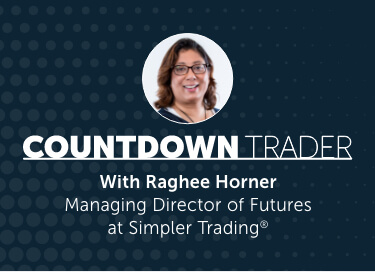First, we talked about my 6-4-2 rule of trading earnings. We then went on to discuss post-earnings and how to find those opportunities. What we haven’t talked about are the exceptions to my rules to understanding and playing earnings.
What are some scenarios where you might actually decide to hold a trade through earnings and not get out within the two weeks leading up to the earnings date? What are the exceptions for holding through earnings?
There are a couple of situations…
One of these situations is when I’ve been playing the 6-4-2 rule, buying the dip trend. Because of the scope of the move, I’ve been able to scale out of 50% of my position. I can hold the remaining 50% or, frankly, less at near a breakeven.
That is one way to break the rules…
In this scenario or exception here the risk is allowable to hold through earnings.
It’s not going to hit zero unless you have no time left on the option. If you have time left (say two to four weeks) and it’s a miss but you own a call and the option value is cut in half, you’ve already accepted that risk.
But again, you need to scale out and be at more or less a breakeven. That’s one way I can choose to go through earnings. I can control my risk because I paid myself. I have a realized gain and I’ve given myself a cushion.
Another rule breaker…
The other exception is when options that we’ve bought are inexpensive. We can then hold through earnings. Let’s look at our AT&T trade as an example…
We picked up these options going into earnings. I had some time left because they were the May 21 expiration. These options were picked up anywhere from about 35 cents to 50 cents each. Since we had plenty of time after earnings, before expiration, there was a latitude to hold it.
Now, if someone owned these 50-cent options and thought, “What if the options got cut in half to 25 cents? What if we lose 55% to 60% of the value of those options? What would that dollar amount be to my account now?”
For most traders, let’s say they bought 10 of these at 50 cents, the upper end of the range. They had a grand total of $500 if they were to risk that entire debit. As long as that $500 did not represent more than 5% of their account, that’s an allowable risk.
That’s an entire debit risk that’s allowable because it does not exceed the amount of risk to our account threshold.
These options actually were held through earnings because of that very low cost. A lot of members saw their options double, if not nearly triple, on the gap up after earnings.
When rule breaking goes bad…
The bad scenario happens when there is a gap in the opposite direction of our play. If options are worth 20 cents or 15 cents, (whatever they might be based on the gap down) it spells trouble. Even if they went to zero based on even 10 options bought at 50 cents (or $50 each) the entire risk would not be greater than 5% of the account.
Hope that helps in giving you some more options and ideas to play earnings and the volatility of high-impact releases. Remember this isn’t just about earnings. This could be a currency into a central bank event. This could be crude oil into an OPEC event. This could be any specific market going into a very impactful event.
Join us at Sector Secrets Mastery where you will learn how to optimize these “breaking rules” events.



